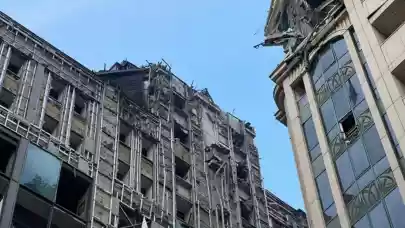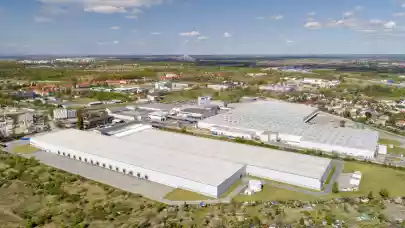
Ukraine’s retail and office real estate markets demonstrated stability and selective growth in the first half of 2025, adapting to wartime conditions and shifting consumer behaviour. The URE Club took a closer look at the changes that took place in H1 2025 in an article for Property Forum.
Retail: Adapting but stable
The Ukrainian retail real estate market in the first half of 2025 focused on changing consumer priorities and the impact of internal migration. The key factor driving development was the active development of regional markets, particularly in the western part of the country. At the same time, the market continues to adapt to new realities associated with wartime restrictions and the transformation of Ukrainian consumer habits.
Experts note positive dynamics: Ukraine's retail trade turnover in January-April 2025 grew both in national currency (+20.33%) and in dollar terms (+14.05%). This indicates the stability of the Ukrainian market and its ability to recover. Although inflation outpaced nominal wage growth, real wages continued to rise, helping to sustain stable consumer demand.
Despite the risks of war and massive air strikes, Kyiv remains stable. Diana Kvitchuk, CBRE Ukraine, comments: "In the first half of 2025, the retail real estate market in Kyiv remained stable, with key indicators virtually unchanged since the beginning of the year. Retailer activity developed at a moderate pace, focusing primarily on the most effective shopping centres with high foot traffic and stable turnover."
In April 2025, the BalticSky regional shopping centre with an area of 10,000 square meters opened in Kyiv, but this did not significantly affect the overall supply of retail space.
According to data provided by CBRE Ukraine, in the first half of 2025, the total competitive supply remained unchanged at around 1.6 million square meters. At the same time, the expert notes a key prospect of the opening of the Ocean Mall shopping centre (GLA 110,000 sqm), which is planned for the fall of 2025, and it will be a potentially significant addition to the market.
As of the end of the first half of 2025, the average vacancy rate in the Kyiv market remained generally stable at 11-12%, with a gradual downward trend in the best retail properties, and in some properties, it is at a “technical” level of 2-3%. Regarding rental rates in Kyiv, they have not changed significantly since the beginning of the year, with prime rates for a typical retail gallery of 100-200 sqm in prime locations ranging from $40-70/sqm/month (0% since the beginning of the year), while in other properties, within $18-38/sqm/month.
Offices: Positive dynamics despite losses
The first half of 2025 was a period of challenges and adaptation for the Ukrainian office real estate market. Despite losses due to the war and a reduction in supply, some market segments showed positive dynamics, and rental rates stabilised.
According to CBRE analysts, overall market trends remained largely unchanged, but the market was significantly affected by direct damage to infrastructure as a result of military action.
By the end of the first half of 2025, approximately 45,000 square meters of office space in Kyiv had been damaged by rocket attacks, reducing the total competitive supply in Kyiv to 2.11 million square meters, down 3% from the same period last year. According to CBRE experts, this reduction was an unprecedented case of a decline in supply caused not by market factors, but by direct infrastructure losses.
In the first half of 2025, office space absorption amounted to approximately 82,000 square meters, which is 16% more than in the same period last year. However, as CBRE analysts point out, about 19% of this volume was related to the forced relocation of tenants from damaged office buildings.
A particularly interesting trend noted by CBRE experts is the emergence of demand from tenants in the military sector. Given that it is not easy for companies in the military segment to find premises to rent, the market offers more complex mechanisms to meet their needs. According to CBRE, such companies are considering not only renting but also purchasing premises and land plots, as well as potentially constructing their own buildings. Companies from Germany (Rheinmetall, KMW), Turkey (Baykar), Norway (Kongsberg), Latvia (Atlas Aerospace), the UK (BAE Systems), the US (Northrop Grumman), as well as Denmark, France, Italy, Spain, Poland, and many other countries, are opening local offices and creating new jobs. A significant share of demand is generated by the public sector and NGOs (13%), reflecting the increased activity of government agencies and civil society organisations during wartime.
According to UTG data, a detailed breakdown of vacancy rates by property class for mid-2025 is as follows: vacancy rates are 28.2% in class A, 20.5% in class B, and 14.2% in class C. These figures reflect the varying attractiveness of properties to tenants in conditions of limited demand.
The effective prime rate for the best properties ranged from $19 to $25 per square meter per month, depending on individual characteristics of the premises, such as the condition of the finish, the location of the property, and the occupancy rate. At the same time, asking rents for Class A properties ranged from $16 to $27 per square meter per month, and for Class B properties from $8 to $18 per square meter per month.



